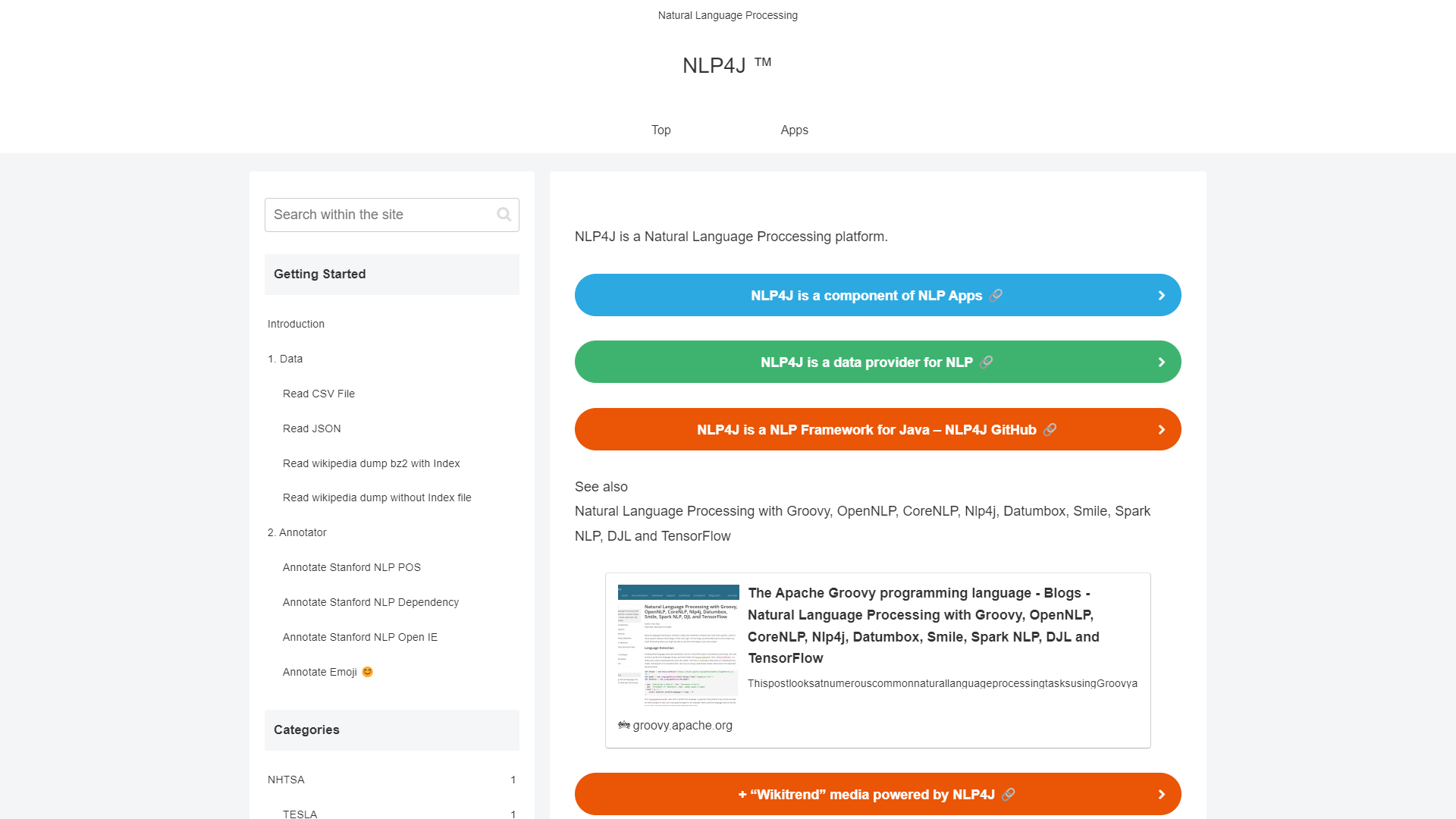Overview
NLP4J is an advanced natural language processing toolkit designed to help developers and researchers analyze and understand text data. It provides a wide range of features to process languages efficiently, making it suitable for different applications such as chatbots, sentiment analysis, and more. With its robust architecture and user-friendly interface, NLP4J aims to simplify the complexities of language processing for users of all skill levels.
Developed by the Stanford NLP group, NLP4J leverages state-of-the-art algorithms to provide accurate insights into text data. It supports multiple languages and can be easily integrated with various platforms and programming languages, allowing users to harness its capabilities in their projects. The toolkit is built on mature libraries that ensure reliability and performance.
Users can enjoy features like part-of-speech tagging, named entity recognition, and dependency parsing, which enable a deeper understanding of text content. NLP4J is also flexible enough to allow customization for specific tasks, making it an ideal choice for those looking to explore the field of natural language processing deeply.
Key features
Part-of-Speech Tagging
Identifies the grammatical parts of words, helping in understanding sentence structure.
Named Entity Recognition
Detects and classifies entities like names and locations in the text.
Dependency Parsing
Analyzes the grammatical structure of a sentence, revealing relationships between words.
Sentiment Analysis
Assesses the emotional tone of text, useful for understanding opinions.
Multi-language Support
Works with various languages, making it versatile for global applications.
Customizable Pipelines
Users can tailor NLP tasks according to specific project needs.
Pre-trained Models
Includes models that help users get started without extensive training.
Easy Integration
Can be integrated with existing tools and programming languages like Java and Python.
Pros
- User-friendlyThe interface is straightforward, allowing users to quickly learn and apply the toolkit.
- Open-sourceBeing open-source means no licensing fees, and users can modify code as needed.
- Robust PerformanceProvides accurate results through advanced algorithms and pre-trained models.
- Community SupportA vibrant community offers assistance, resources, and shared experiences.
- Multi-disciplinary UseSuitable for both academic research and industrial applications, broadening its appeal.
Cons
- Steep Learning CurveBeginners may find it challenging to dive into more complex features without prior knowledge.
- Limited DocumentationWhile some documentation is available, it can be sparse for certain functionalities.
- Performance IssuesMay require significant computing power for large datasets, limiting usability.
- Integration ChallengesSome users report difficulties when integrating it with other systems or languages.
- Regular Updates NeededRequires updates to fix bugs or improve features, which may be daunting for some users.
FAQ
Here are some frequently asked questions about NLP4J.
NLP4J is a natural language processing toolkit that helps users analyze and understand text data.
Yes, NLP4J is an open-source tool, which means it is free to use and can be modified.
Yes, NLP4J supports multiple languages, making it versatile for various applications.
It offers part-of-speech tagging, named entity recognition, dependency parsing, sentiment analysis, and more.
You can start by visiting the NLP4J website and following the tutorials provided there.
Yes, there is a supportive community where users can share experiences and get help.
NLP4J is primarily used with Java, but it can be integrated with Python and other languages.
Yes, but handling large datasets may require considerable computing resources.

